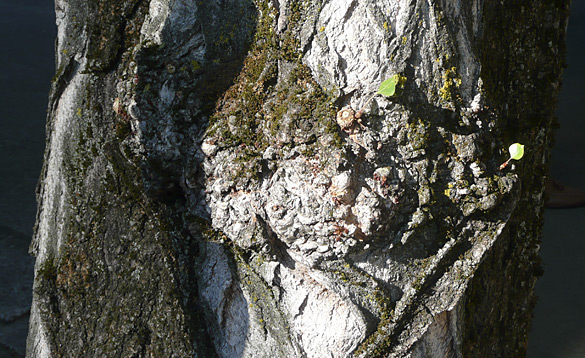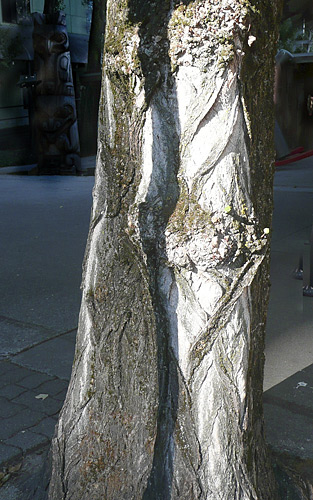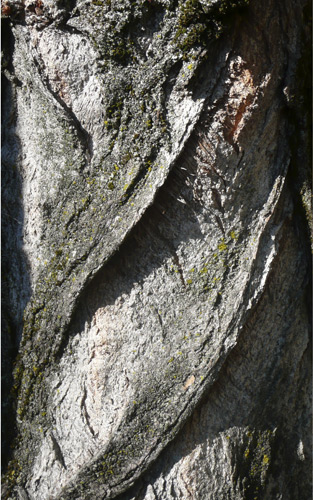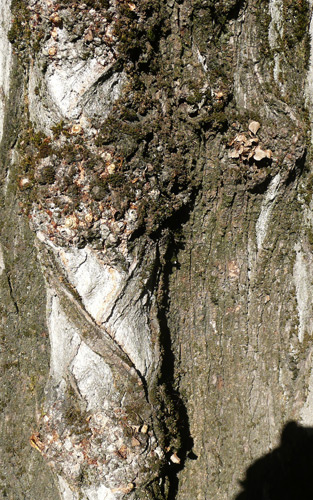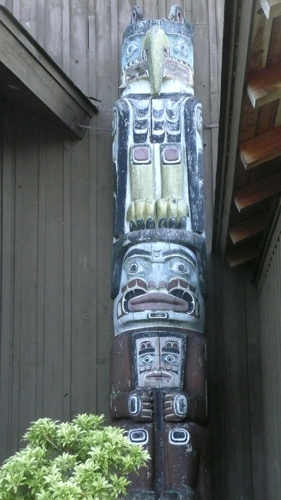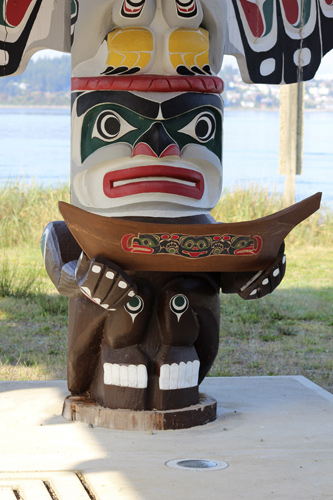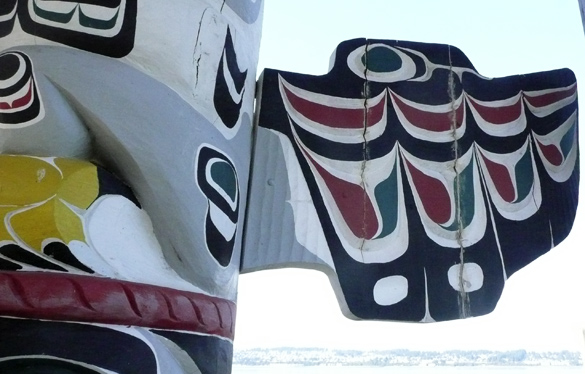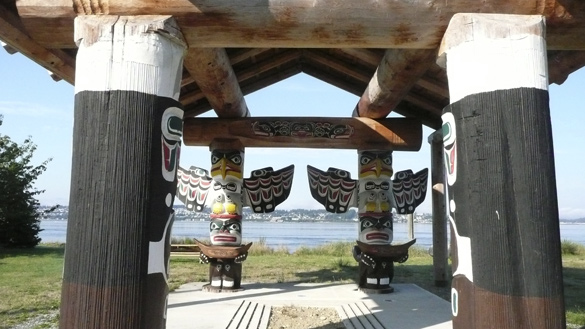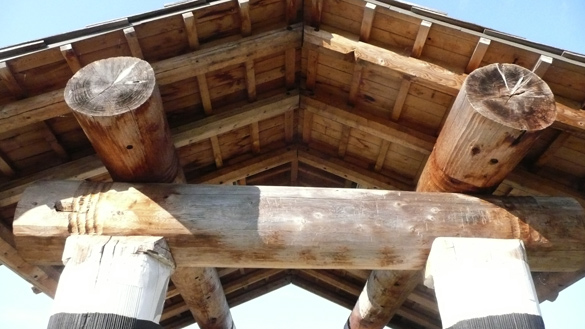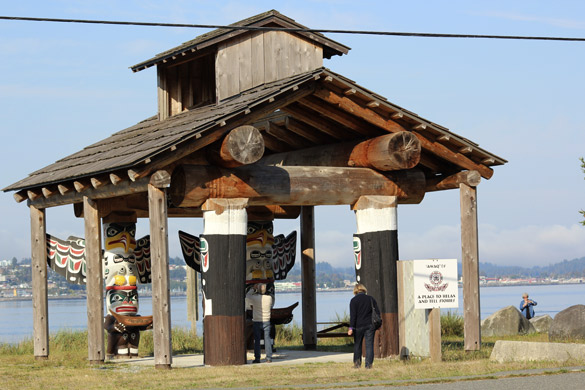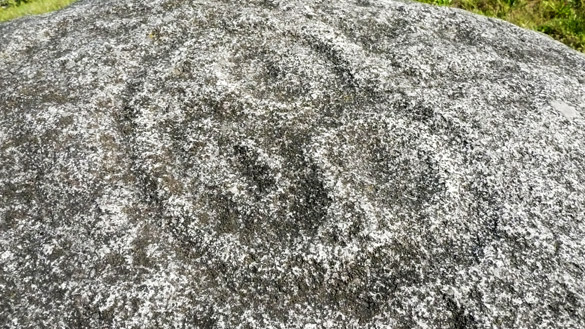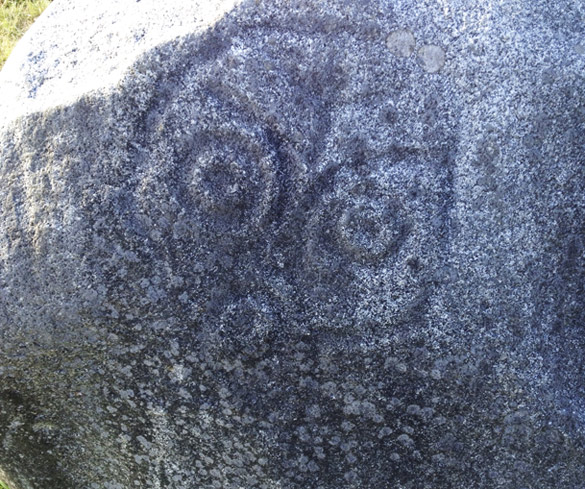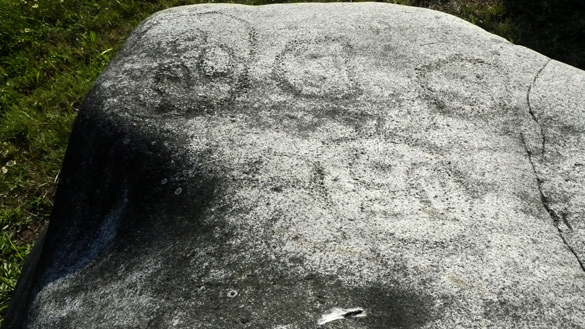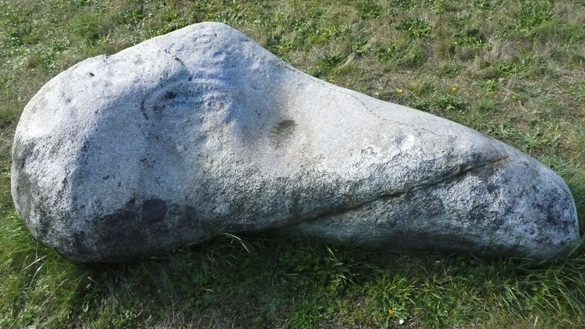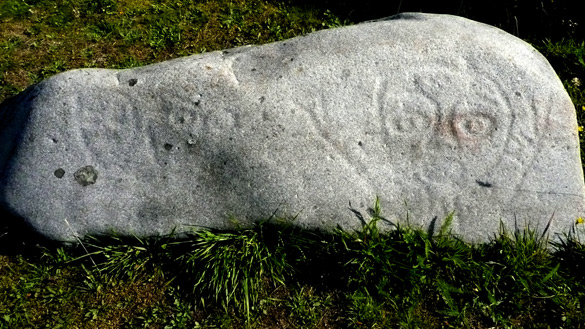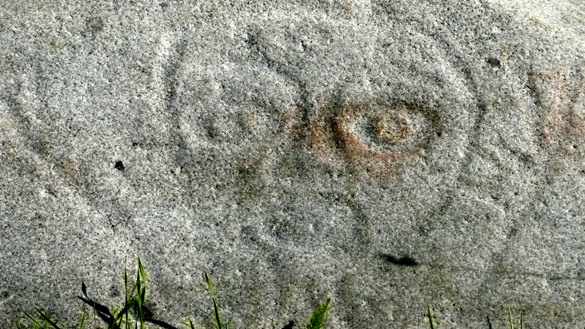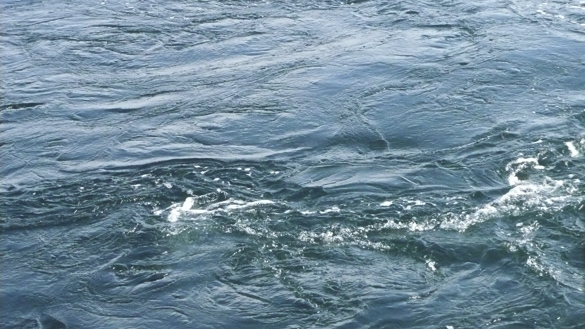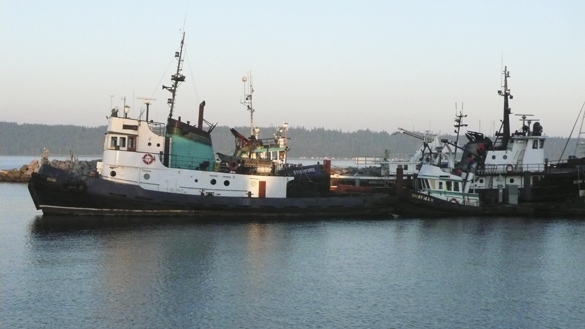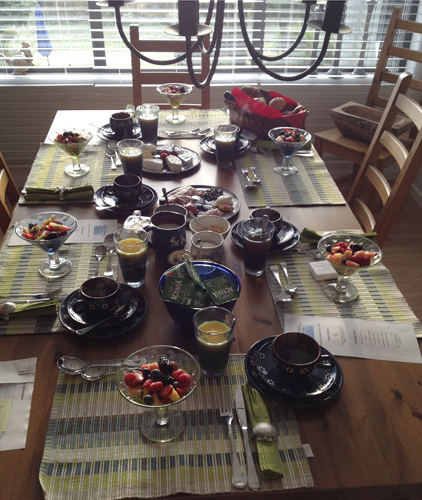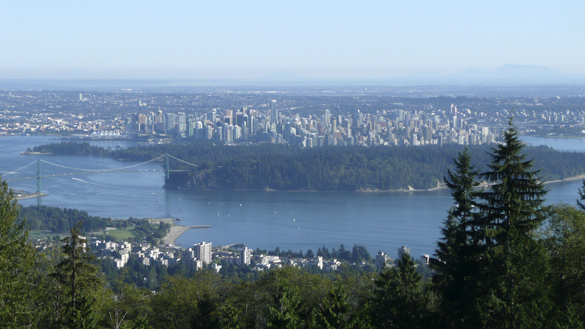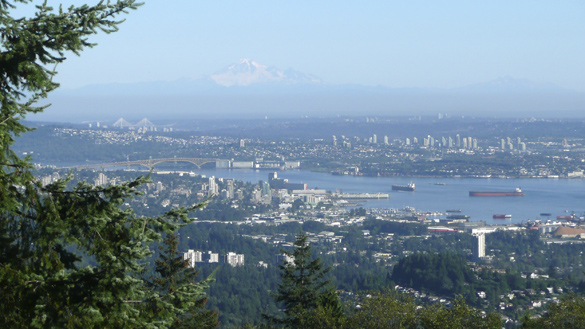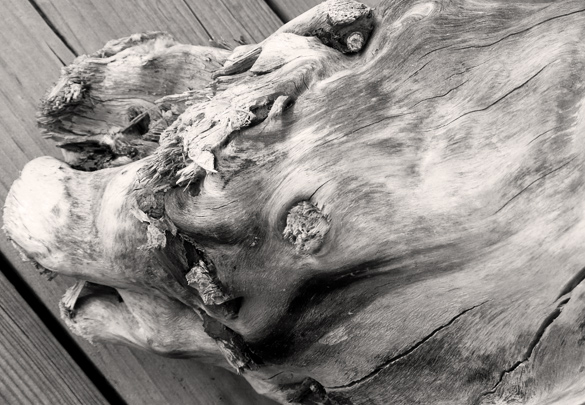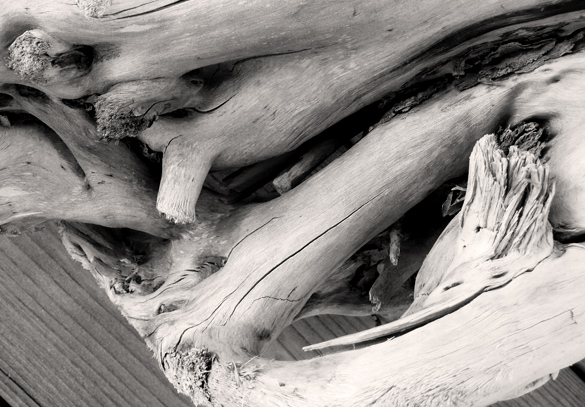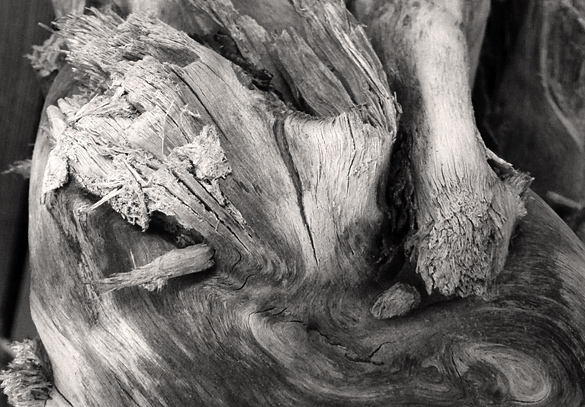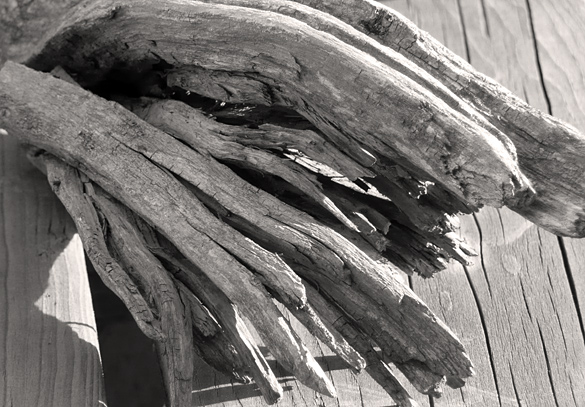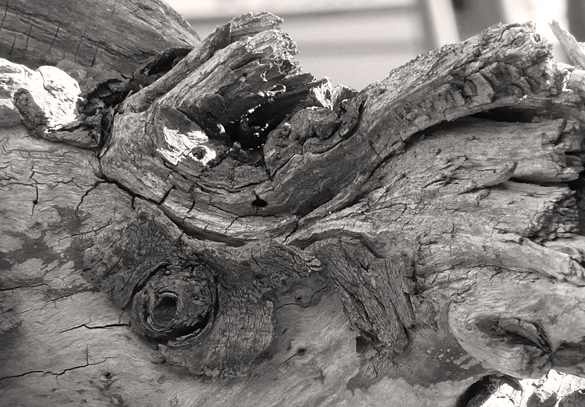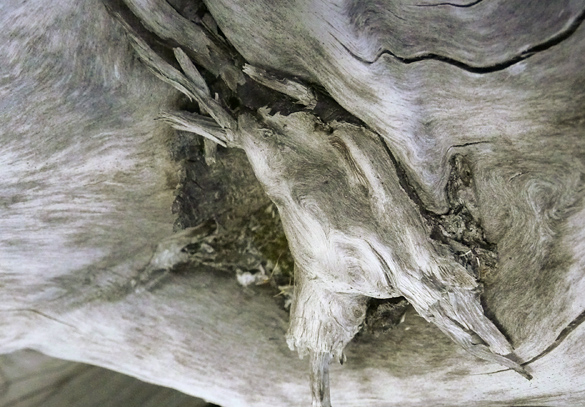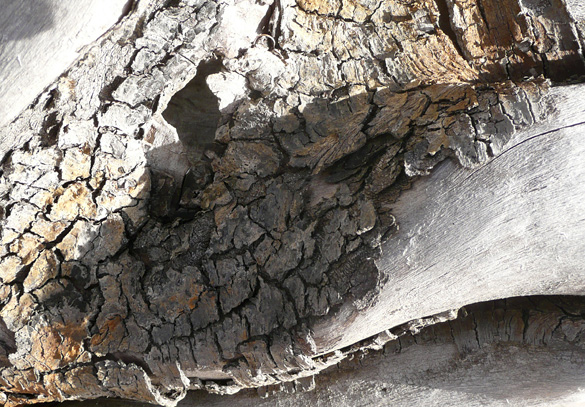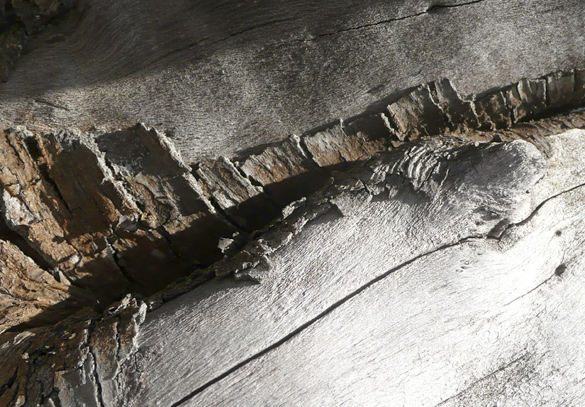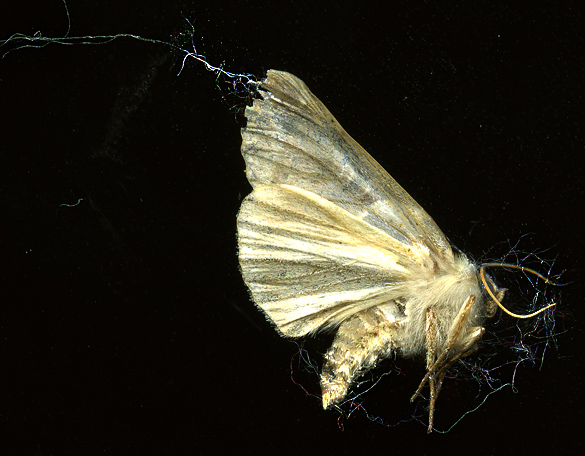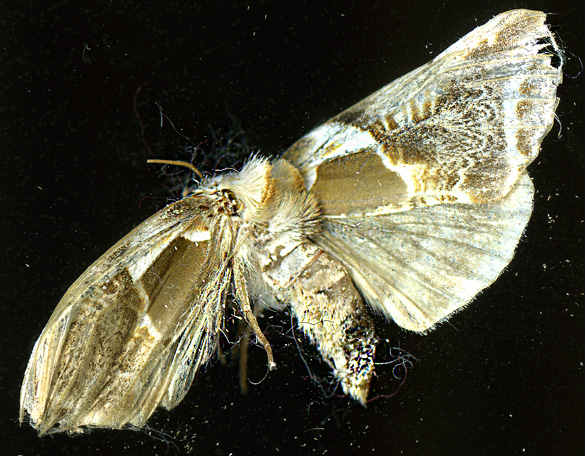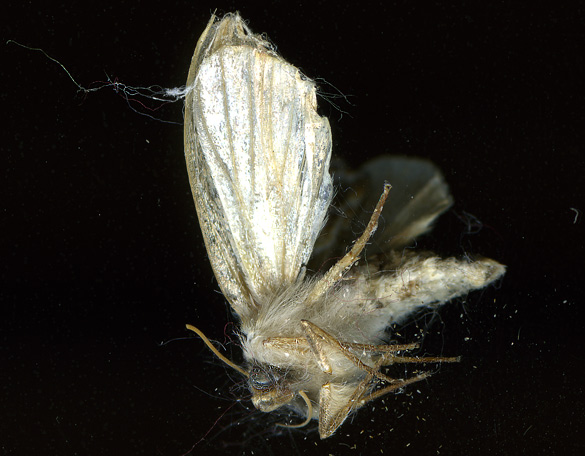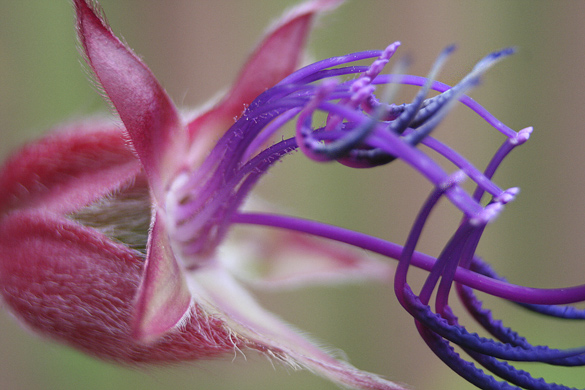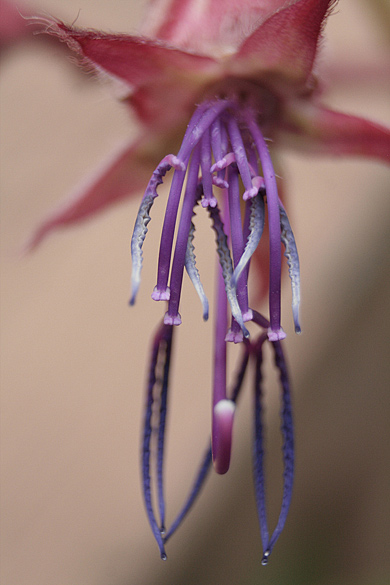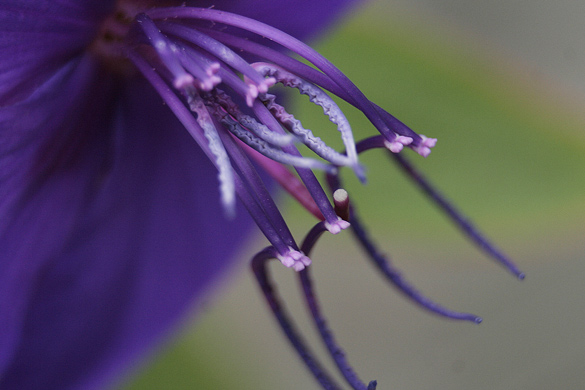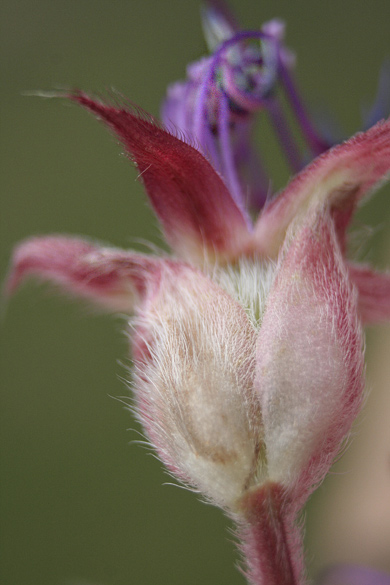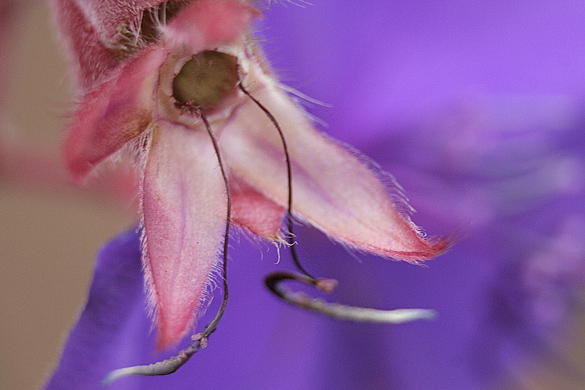island hopping, day 3 Sointula
October 12, 2013 in Canada and BC, Finland, Estonia & Finno-Ugric, History, Travel
After our Quadra Island visit on day 2, we returned to Campbell River and headed north about 250 km. along a very good highway lined with forests, mountains, glimpses of lakes and ocean inlets but with very little population. Our destination was Port McNeill, but our accommodation was about a ten minutes drive beyond at a seaside campground, in a one bedroom log cabin. Though we knew that every cabin was full we were surprised by all the motorhomes and campers in the campsites. As we’d had great difficulty finding accommodation for four in town even a few weeks in advance, we surmised that there must be a lot of workers living in all the hotels, motels, and campgrounds in the area because of a lack of housing. We’d also been told that it was a popular fishing season for tourists as well.
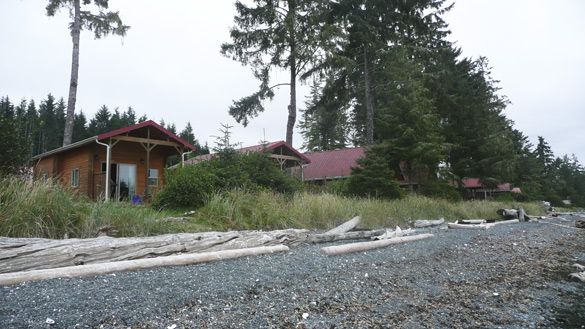
Anyway, the cabin though tiny was rather cute with a loft meant for kids (husband slept up there the second night because of our awful hide-a-bed). I enjoyed watching and hearing the sea birds along the estuary, and the view across to Malcolm Island, with its lighthouse. We actually spent little time here, only to sleep two nights and make our own breakfasts and packed lunches for our outings. Dinners in town were very good.
Day Three was a full one with two very different destinations on two islands accessible by ferry from Port McNeill: Sointula on Malcolm Island and Alert Bay on Cormorant Island. I will write about Sointula first.
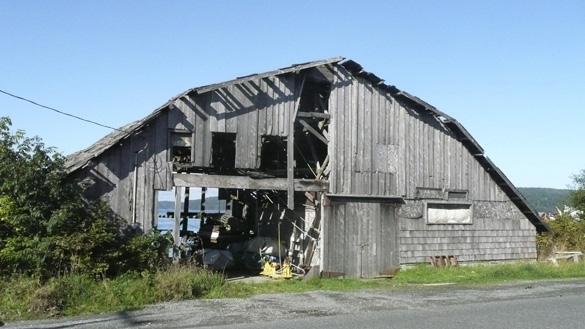
One of many old boathouses sitting partly over the shores, evidence of an early fishing community
Sointula has long interested me because of its early Finnish community. Sointula, Finnish for “place of harmony,” was settled by Finnish workers in the beginning of the 1900’s, as a co-operative community of utopian socialists led by Matti Kurikka. Eventually it failed with many Finns leaving for other parts of BC, yet many stayed. Some of their descendants are still living here. Please read more about their history here.
After a little drive around the old village, we headed for the Sointula Museum which offers a unique educational experience. Its collection includes artifacts, publications and photographs specific to the development of this community from a Finnish socialist commune to the quiet village of today. The 100-year history of the settlement from its utopian beginnings involves the development of socialist thought in Canada and the building of the commercial fishing industry, unions and cooperative economic structures.
At the museum we met Sue, the lively and informative manager with whom I spent most of our time there chatting. She said this building was the former schoolhouse which she’d attended as a child. The teacher was her English mother and she had a Finnish father. The museum is full of old objects from the lives of the islanders. I barely had time to see it all while husband and our visitors did. I especially loved the loom, so like the one we had in our home on loan for a few years when I was in my late teens. My mother wove a few things, I made a rag rug now long worn out.
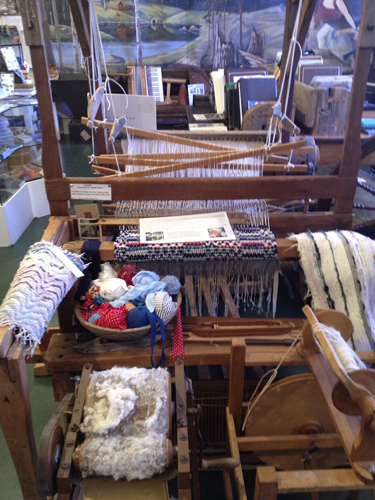
As Sue said, most visitors find many of the admittedly worn and shabby things brought back memories of our elders. I don’t mean to be unkind, but I believe the museum really does need a lot of help and perhaps more space in organizing things in a more presentable way for it seemed too much like a junk shop. It must be difficult to find that help in this tiny remote village. For me, the personal contact with Sue was most heartwarming.
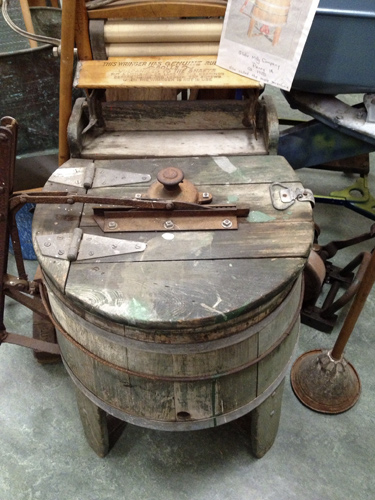
Because this was Monday, the bakery in town was closed to my husband’s extreme disappointment for he had been looking forward to some Finnish pulla. The Co-op store, the first of its kind in Canada was also closed. We went for a drive around the island, passing some newer homes and marinas, signs of perhaps vacation or retirement homes in some cases. On the east side of the island is a large campground and lovely views east to mainland BC.
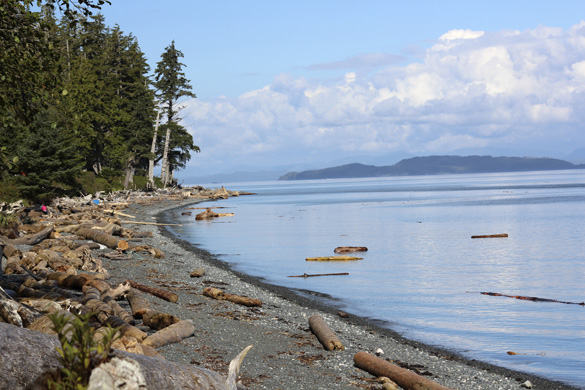
Sointula was preparing for an exciting conference just a week or so later, called Culture Shock: Utopian Dreams, Hard Realities. And most exciting was that a Finnish musical theatre group was coming! Do check out this link to an excellent story and video by CBC. Wish I could have been there.
More about Sointula in Crawford Kilian’s articles in the Tyee : In Sointula, Survival of the Finnish, Radical Finns Persevere off BC coast. And Kilian’s own blog called Sointula.
Added November 1st: After Jean mentioned a Finnish Utopian society in Brazil in comments in another post, I searched and found a list of Finnish Utopian communes around the world – fascinating. Sointula seems to have had the largest population except for one in Karelia, next door to Finland.
Added November 4th: I have only recently come across the blog associated with the Suomi-Seura organization for Finnish expatriates to which I belong. It is called Kotisi Mailmalla (Your Home in the World). In it is a wonderful post about one person’s weekend visit to Sointula’s Utopia conference. In Finnish only, sorry.
